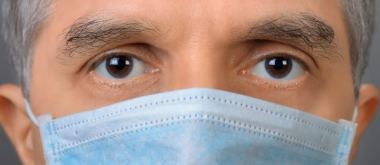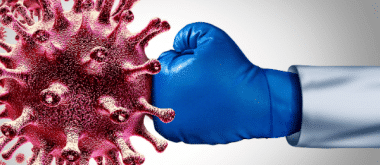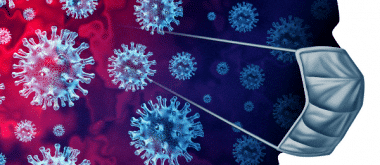For many people around the world winter, 2020 brought with it the hope that many have been seeking during a global pandemic – and it came in the form of a COVID-19 vaccine. Less than one year after the start of the pandemic, researchers from around the world have worked at record speed to develop vaccines to combat COVID-19. World-leading health organizations have put up measures to prioritize vaccination of those at the highest risk of getting infected and those with increased chances of succumbing to the virus. The World Health Organization (WHO) is partnering with UNICEF and Gavi to build an efficient infrastructure to ensure the vaccine is delivered safely.
With the vaccine now a reality, here is everything you want to know or may be wondering about the vaccines, as there are presently three COVID-19 vaccines available, or in final approval stages.
How Does the COVID-19 Vaccine Work?
To best understand how the COVID-19 vaccines work, it helps to first understand how the body fights general illness and infection. When germs, such as a coronavirus, infect the body, they attack and multiply. The body’s immune system initiates the use of several tools to fight the infection -red blood cells, which carry oxygen to tissues and organs, and three types of white blood cells, or immune cells, which fight the infection directly.
According to the Center for Disease Control (CDC), “the three different types of white blood cells fight infection in a number of ways:
Macrophages are white blood cells that swallow up and digest germs and dead or dying cells. The macrophages leave behind parts of the invading germs called antigens. The body identifies antigens as dangerous and stimulates antibodies to attack them.
- B-lymphocytes are defensive white blood cells. They produce antibodies that attack the pieces of the virus left behind by the macrophages.
- T-lymphocytes are another type of defensive white blood cell. They attack cells in the body that have already been infected.
The first time a person is infected with the virus that causes COVID-19, it can take several days or weeks for their body to make and use all the germ-fighting tools needed to get over the infection.”
After infection, the body holds onto a few T-lymphocytes, also known as memory cells, which are stored and go into action quickly if the body encounters the same virus again. Likewise, when the familiar antigens are detected, B-lymphocytes immediately begin to produce antibodies to attack the virus. While experts are still learning how long these memory cells protect a person against the COVID-19 virus it is because of these memory cells that vaccination is so important for preventing future spread and infection severity.
Now to understand the specific COVID-19 vaccines. These vaccines help the body develop immunity to the virus by providing it with a supply of T-lymphocytes as well as B-lymphocytes that will allow the body to identify and know how to fight the COVDI-19 virus in the future, should the body come in contact with it.
Like natural viral immunity, COVID-19 vaccine immunity typically takes a few weeks for the body to produce enough T-lymphocytes and B-lymphocytes after vaccination. This is why it is essential for continued precaution to be taken for weeks after the vaccination, as it is still possible that a person could be infected with the virus just after vaccination because the vaccine did not have enough time to provide the white blood cell protection.
The Types of Vaccines
Currently, there are three main types of COVID-19 vaccines that are either available for administration or that are undergoing stage three clinical trials in the United States.
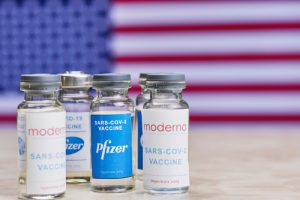
Include harmless proteins of the virus that cause COVID-19 instead of the entire germ. Once vaccinated, the immune system recognizes that the proteins don’t belong in the body and begins making T-lymphocytes and antibodies. If the body is ever infected in the future, memory cells will recognize and fight the virus.
Contain a weakened version of a live virus – a different virus than the one that causes COVID-19 – that has genetic material from the virus that causes COVID-19 inserted in it (this is called a viral vector). Once the viral vector is inside our cells, the genetic material gives cells instructions to make a protein that is unique to the virus that causes COVID-19. Using these instructions, the cells in the body make copies of the protein. This prompts the body to build T-lymphocytes and B-lymphocytes that will remember how to fight that virus if it is infected in the future.
To avoid confusion, it should be noted that none of the COVID-19 vaccines contain the live virus and cannot give you COVID-19. Nor do the COVID-19 mRNA vaccines do not change or interact with your DNA in any way. The mRNA vaccine teaches the body’s cells how to recognize and fight the virus by learning how to make a protein that triggers an immune response.
Research and Development of COVID-19 Vaccines:
The development of the COVID-19 vaccines is an extensive and rigorous process that involves numerous testing to enhance the vaccine’s safety. Due to the global pandemic and scale of the COVID-19 virus, vaccines received Emergency Use Authorization (EUA) to facilitate large-scale availability and use to combat COVID-19.
The development process of COVID-19 Vaccines is in four simplified phases:
During this phase, the Vaccine screening and evaluation identify the antigen that triggers the body’s immune system. If it is found that vaccine antigens can trigger the immune system, it goes to the next phase, which involves human clinical trials.
Stage one of the clinical trial involves testing the potential vaccine on young and healthy adult volunteers to determine its safety on human use. The trial also confirms the appropriate dosage for an effective vaccine.
Stage two of the clinical trial involves multiple trials to assess the vaccine’s safety and the immune response. Typically, these trials are conducted by holding control groups and managing a variety of volunteer qualities and traits in specific characteristics to determine the vaccines’ effects and potential side effects.
The final stages of vaccine research is done on thousands of volunteers to determine whether the vaccine is effective and protects against the virus. Stage three is typically carried out across multiple countries to assess its effectiveness on different populations with different characteristics in play.
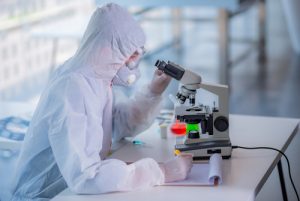
For quality control reasons, the control of vaccines’ administration is by both national authorities and WHO. Safety of the vaccine becomes paramount, and there is continuous monitoring of its effects on individuals and update post-approval clinical reports to indicate safety and effectiveness of the vaccines as they are administered.
The Available, and Upcoming, Types of COVID-19 Vaccines
There are three types of COVID-19 vaccines currently in play and authorized by WHO are as follows:
Pfizer Inc. and BioNTech manufacture the Pfizer-BioNTech COVID-19 vaccine. The vaccine is an mRNA type of vaccine and is administered in two shots over an interval of 21 days apart to ensure effectiveness. The shot administration is on the upper arm. Preliminary vaccine research found that this vaccine has a 95 percent efficacy rate and requires storage in specialized freezers, at about -94 degrees Fahrenheit.
ModernaTX, Inc. manufactures the vaccine. Like the Pfizer vaccine, this is an mRNA type of vaccine and is administered with two shots, in a 28-day interval for proper effectiveness, and is given in the upper arm. This vaccine has been found to have about a 95 percent efficacy rate and can remain stable in transport and storage at 36 to 46 degrees Fahrenheit for short-term storage, or -4 degrees Fahrenheit for long-term storage up to six months.
The Johnson & Johnson vaccine is a single shot COVID-19 vector vaccine manufactured by Janssen Pharmaceutica. This vaccine has been found to be 85 percent effective overall in preventing severe disease and protecting against hospitalization and death from COVID-19. This vaccine aims for storage ability at ordinary refrigerator temperatures for an extended period, making it a prime candidate for transportation to delivery sites.
Common side effects of the current vaccines may include soreness, swelling, and redness at the spot of injection. You may also experience headaches, joint pain and fatigue for the first 24-hours after vaccination. It should also be noted that current research is monitoring how these various vaccines can hold up against fighting COVID-19 variants as they emerge, both initially and long-term.
While these are the main three vaccines in the spotlight at the moment, other COVID-19 vaccines are in the works including the AstraZeneca-University of Oxford vector vaccine which is currently approved in Europe and is administered in two shots, 28 days apart. As time goes on, more vaccines will be approved and become available.
 More About the Vaccine Process
More About the Vaccine Process
These different types of vaccines are not interchangeable with each other during the two doses and administration of them is recorded for the individual receiving them in the Immunization Information System (IIS) and issuance of an immunization card after the first dose showing the vaccine type to eliminate mix-up cases of the different vaccine shots.
It should also be noted that there is no problem with the administration a COVID-19 vaccine to persons with a history of SAR-CoV-2 infections. According to the CDC, “due to the severe health risks associated with COVID-19 and the fact that reinfection with COVID-19 is possible, you should be vaccinated regardless of whether you already had COVID-19 infection.” In addition, the current COVID-19 vaccines have been deemed safe for administration during pregnancy and for those looking to become pregnant.
While COVID-19 vaccine administration and research continue, it is important to stay informed with local and world health organizations and outlets to know the newest findings and implications on variants and how they may impact your health.
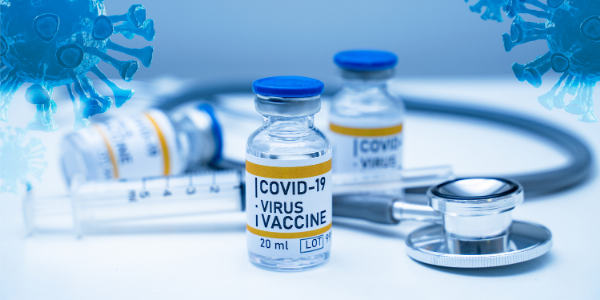
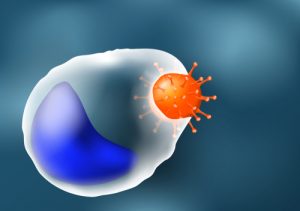 Macrophages are white blood cells that swallow up and digest germs and dead or dying cells. The macrophages leave behind parts of the invading germs called antigens. The body identifies antigens as dangerous and stimulates antibodies to attack them.
Macrophages are white blood cells that swallow up and digest germs and dead or dying cells. The macrophages leave behind parts of the invading germs called antigens. The body identifies antigens as dangerous and stimulates antibodies to attack them.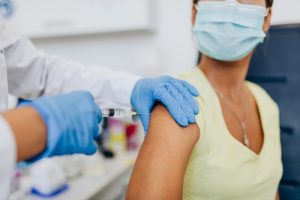 More About the Vaccine Process
More About the Vaccine Process